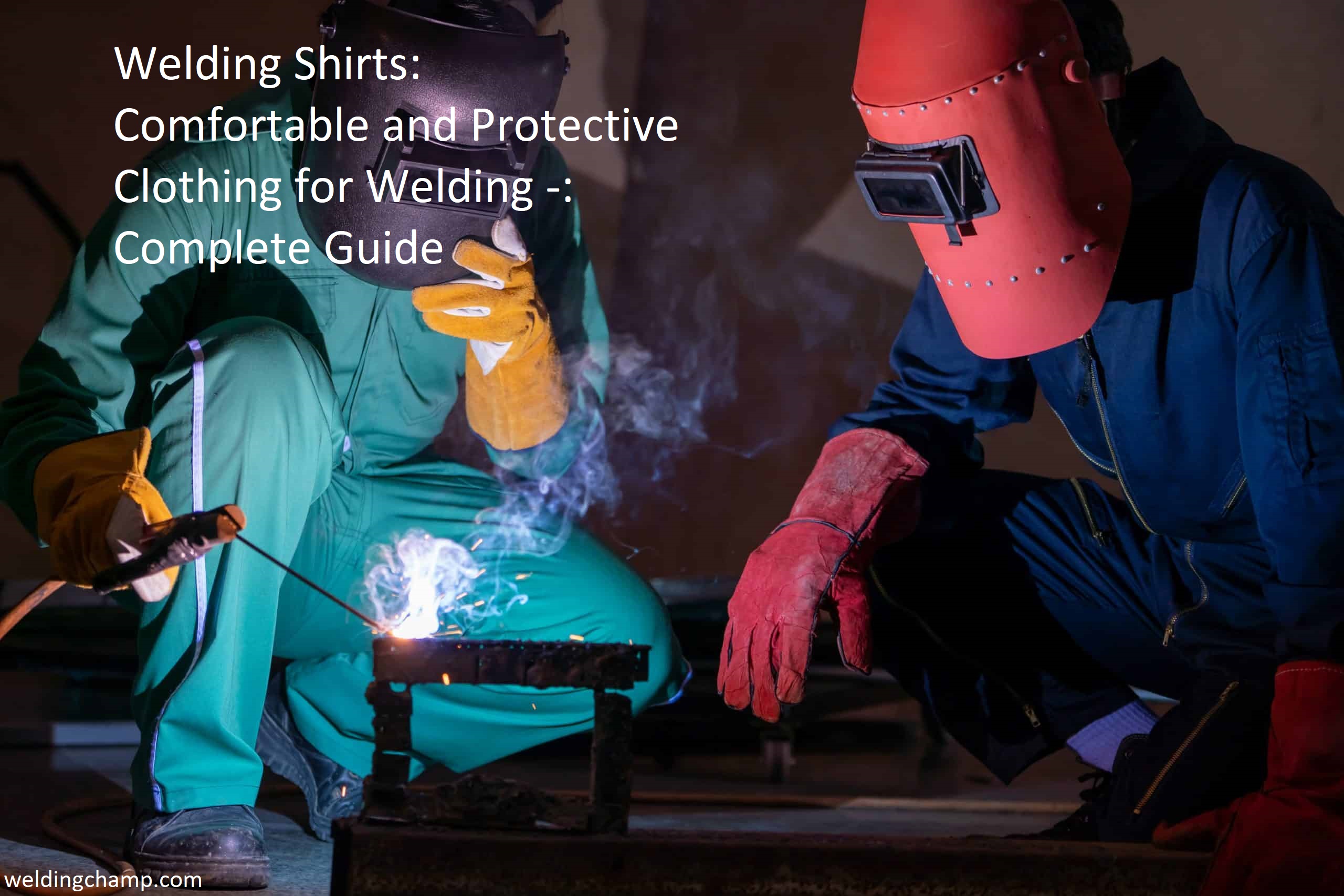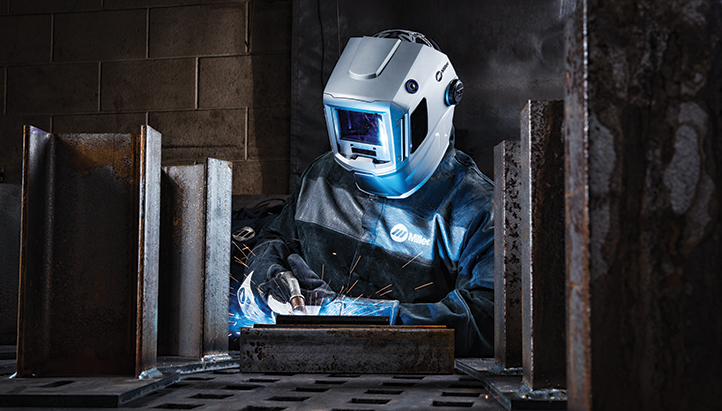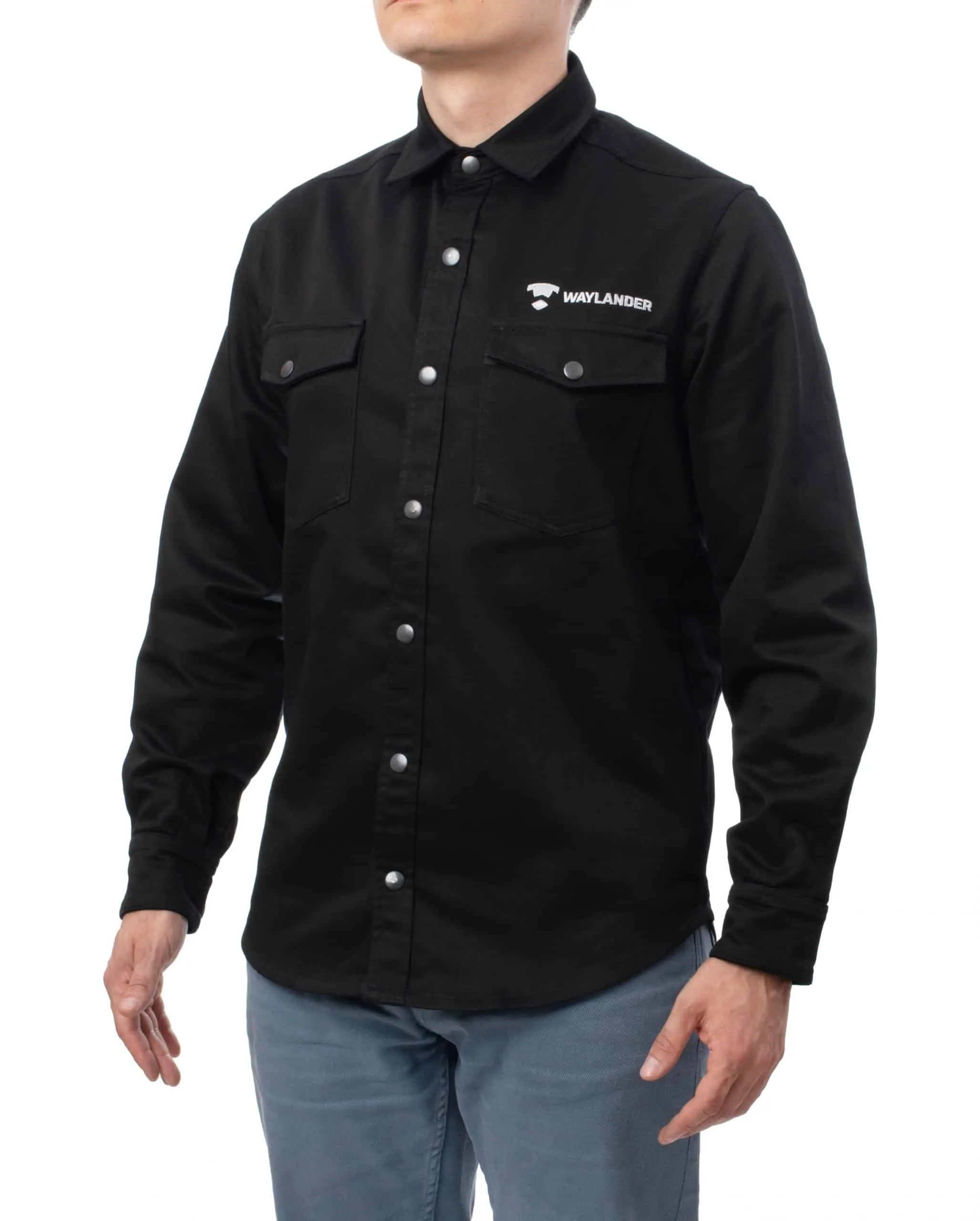Are you looking for the right clothing to protect yourself while welding? Look no further!
This guide will provide you with the best information about welding shirts – their comfort, protection, and affordability. With the right welding shirt, you can stay safe and comfortable throughout your project!
Welding is a specialized profession that requires an individual to handle dangerous tools and processes with caution. As a result, safety is paramount when it comes to welding, and the right clothing can help ensure welders stay safe and comfortable while on the job. To keep them protected from burns, sparks, and ultraviolet radiation, welding shirts are an essential piece of apparel.
In this guide, we will explore some of the different types of welding shirts available, the materials they’re made from, how to select a welding shirt that best fits your individual needs, and tips for proper shirt care.
Materials and Features of Welding Shirts
When it comes to welding shirts, it’s important to pay attention to the materials and features used in their design. Not only do they have to provide protection from the heat and sparks of welding, but they also have to be comfortable and allow a full range of motion while you work.
Welding shirts are usually made from a combination of either flame-resistant cotton or fire-resistant synthetic fabrics such as Nomex® or Protera®. Cotton is soft and naturally moisture wicking, which makes it comfortable for all-day wear, while synthetic fabrics better insulate against the heat produced by welding. Welders may opt for a blend of both materials for the best protection on long job sites where temperatures can vary greatly. Additionally, many manufacturers offer cooling technology that helps keep wearers dry and comfortable in hotter climates.
In terms of features, there are several key options present in any quality welding shirt:
-Reinforced stress points – Areas prone to friction or abrasion should feature extra layers of material for added durability; -Secure closures – Welding shirts should feature either snaps or hook-and-loop fasteners at cuffs, chest pockets and chest flaps; -Additional pockets – Extra pockets near elbows can hold small tools; -Collar protectors – Many styles add protective material around collars and shoulder seams made from kevlar® blends; -Hooded pullovers – These are a must when working outside in rain showers as they provide excellent cover from both rain and wind while maintaining visibility with large front windows; -Preciseness coloring – Key features such as marking tape loops offer improved visibility without sacrificing safety standards.
Flame-resistant properties
When it comes to welding safety apparel, the primary concern is protection from heat and dangerous sparks that could cause serious harm. Welders need clothing made of a material that can withstand the high temperatures of the welding environment without catching fire. Traditional fabric materials, such as cotton, are highly flammable and unusable in a welding environment, while flame-resistant fabrics are specifically designed and treated to resist burning in high heat conditions.
The flame-resistant properties of welding shirts come from fibers or woven yarns that have been treated with chemicals to reduce the rate and intensity of flammability. That is why it’s essential for welders to use only specialized clothing when working with hot metal – even if there aren’t any visible open sparks or flames present during work. Flame-resistant fabrics such as Nomex® have been proven effective in resisting burning from an open flame (ASTM D6413 test method), and help protect welders from sparks, slag particles, and other small debris during welding projects.
In addition to choosing fabrics specifically designed for welding environments, it is important for welders to select clothing items with a comfortable fit that won’t restrict their range of movement or hinder their causes of visibility while they work. Clothing items should never be visibly shredded or worn out since this breaks down the fabric fibers which makes them more susceptible to burns and other hazards associated with welding activities.
Additional features such as pockets, ventilation, and cuffs
When selecting a welding shirt, one should take into consideration features such as pockets, ventilation, and cuffs. These additional features can provide important benefits to the welder while they are wearing the garment.
Pockets can offer convenience and portability of tools and accessories that the welder may use on any job site. It is important to ensure that pockets have secure closures such as sturdy buttons or zippers in order to keep items securely stored.
Ventilation is another beneficial feature when it comes to welding shirts. The action of welding often results in high heat levels and this may increase perspiration significantly. An effective way to reduce excessive sweating is by purchasing a shirt with properly placed vents or even mesh panels throughout the fabric which allow for maximum airflow against the body while providing optimum comfort and protection from heat transfer.
Finally, cuff features such as adjustable lengths with snaps or hook-and-loop components provide more secure fitment for wrists by ensuring no exposed skin through which sparks or debris can penetrate. Cuffs also aid in preventing dirt and other particles from entering sleeves thus providing overall optimal protection from hazards associated with jobsite activity . A good quality welding shirt will offer all of these features for increased safety and comfort during any workplace project.
Choosing the Right Welding Shirt
Choosing the right welding shirt is an important factor in staying safe and comfortable while engaging in welding activities. Welding shirts should offer protection from sparks, flames, and debris while also allowing flexibility and breathability. There are a variety of options when it comes to choosing the right welding shirt; including fabric type, fit considerations, and extra features to look for when choosing a specific model.
Fabric Type: The most common type of fabric used for welding shirts is cotton or 100% cotton blends. Cotton allows welders to stay cool due to its breathability and it is also very flame resistant. Additionally, leather is occasionally seen in heavy-duty models of welding shirts due to its strong flame resistance qualities.
Fit Considerations: When selecting the perfect welding shirt, fit is key! Look for shirts that are slightly loose but do not allow too much bagginess which could get caught on sharp edges ors tructures nearby where you are welding. Additionally, be sure that your sleeves are long enough so that they do not ride up as you move your arms – if necessary consider choosing a size larger than normal!
Extra Features: Some higher-end models may feature extra features such as padding on the elbows which can provide additonal comfort while working with large tools. Other noticable features include reinforced seam stitching which gives extra durability to an already durablewelding shirt – allowing them to be used more often over time without worry of wear and tear due to their strength and its wear resilience over time increase work safety as well has providing peace of mind!
Considerations for selecting the right welding shirt, such as job requirements and personal preferences
It’s important to select the right welding shirt for your unique needs. Not all welding shirts are the same, and you may need a specific type of welding garment for specific tasks. Additionally, considerations such as your budget and personal preferences may be important to you when selecting the right clothing for work. Here are some points to ponder when looking for a comfortable, protective welding shirt.
Job Requirements: Your job requirements should play a large role in selecting a welding shirt that can handle the task at hand. If you’re often exposed to extreme temperatures while working, it’s important to consider what types of fabric will handle those temperatures the best and still keep you comfortable. Flame-resistant (FR) fabrics are typically used in welding garments due to their ability to resist burns and protect workers from other serious injuries due to sparks and accidents and should be considered if this is an issue where you’re working. In addition, consider what types of tasks you’ll be performing while wearing the shirt—do you need an adjustable cuff or collar, or perhaps several pockets? These features can make it easier and safer for you to perform your job efficiently and effectively.
Personal Preferences: Additionally, pay attention to fit, comfort and other aspects that matter most to your personal preferences. Do you prefer heavier fabric or light material? Are there certain colors that would look better with your uniform? There are many details that can go into purchasing the perfect garment from durability of fabric to color choices available—all which come down your individual style preference. Furthermore, perhaps more importantly than style is comfort so don’t forget about trying on various styles before deciding which ones pass all of your requirements!
Considering these two factors—job requirements as well as personal preferences—can help ensure that you have chosen a welder’s shirt perfect for the task at hand while still remaining comfortable throughout all aspects of work life!
Sizing and fit
Welding shirts offer protection from the elements and will ensure that you remain comfortable for your welding sessions. It is important to take your sizing into consideration before purchasing a welding shirt. Knowing your measurements will help you determine which size is most likely to be a good fit for you and keep you comfortable throughout the day.
Like all other forms of clothing, welders’ shirts come in different sizes so they can fit most body types. Measurements are usually provided by manufacturers on product descriptions, allowing you to match their sizes with yours and make sure the shirt fits properly before making a purchase. When selecting a welding shirt, it’s best to choose one that fits closely but doesn’t pull or bind when moving and bending your arms or torso.
Compounding factors like body shape, activity levels, and environment must also be taken into consideration when it comes to finding the right sizing for welding apparel. If in doubt, consult measurements across multiple size charts from different manufacturers before ordering, since these charts can vary slightly from one another due to varying cuts used in garment production.
Recommendations for popular welding shirt brands and models
When it comes to welding, finding the right protective clothing is of paramount importance. For welders, this usually means a welding shirt in order to provide adequate protection from harmful elements like sparks, metal splatters, and intense heat. As welding shirts come in different styles and levels of protection, here are some recommendations for popular brands and models of welding shirts that are both comfortable and protective.
One example is the Tillman 2214 Procool Mesh Welder Cap Sleeve Shirt. This shirt is made with 100% flame-resistant cotton that meets HRC2 requirements and provides an arc rating of 20 cal/cm². It features an oversized fit with cap sleeve styling as well as two spacious lower patch pockets. For extra ventilation during work sessions, it includes zippered side vents and mesh panels on the back yoke and shoulder areas.
Another recommendation is the Lincoln Electric K2979 Flame Resistant Welding Shirt. This model has a classic snap-front styling with adjustable notched cuffs for added comfort and convenience. The cotton blend fabric boasts an ATPV 36 cal/cm² rating for great personal safety in addition to stellar breathability provided by mesh inserts on back yoke, chest pocket area and cuffs gussets when needed. An additional bonus feature is its reflective logo trim for improved visibility at night or in dark settings.
Finally, there’s the Miller Electric 224135 Flame-Resistant Cotton Welding Shirt with Hood. This model comes with a detachable hood that pulls up easily according to need or preference when working around heat or dangerous sparks from exposed welds as well as a scored neck collar that lays flat against your skin without bunching up while still providing yourself well-ventilated comfort during long hours on the job thanks to chest gusset pockets on either side enhanced with mesh inserts. The entire construction uses 10 oz., 100% flame resistant cotton fabric rated at UPF 50+ which grants added protection against harmful UV rays while also giving you increased flexibility through its reinforced side splits at hemline edges so you can move freely without feeling restricted during movement while working safely but comfortably as possible all day long within hazardous work locations without having to worry about exposure hazards wearing this high quality artisanal welding shirt!
Maintaining and Cleaning Welding Shirts
It is important to keep welding shirts clean and in good condition. The fabric of the welding shirt will determine the best way to care for it. Generally, most welding shirts should be washed separately using only cold water on a gentle cycle with a mild laundry detergent.
It is recommended to do a pre-wash treatment prior to washing the shirt, as this can help remove any oils that may have accumulated during regular use. Avoid using fabric softeners, as these can interfere with the flame resistance capabilities of the shirt’s fabric. For similar reasons, do not iron or dry clean welding shirts – instead, line drying is recommended for most fabrics used for welding shirts.
Additionally, make sure to inspect regularly for any holes or damage that may have occurred during normal use and replace old clothing when necessary; this will ensure you remain adequately protected from flying sparks and other hazards related to welding.
Proper care and maintenance of welding shirts to ensure longevity and effectiveness
Your welding clothing is designed to protect you from the hazards of welding, but it’s just as important to remember that proper care and maintenance will ensure its longevity and maximum protective quality. Welding clothing is typically made from fire-resistant fabric, so it needs to be properly cared for in order to remain safe and durable. Here are some tips for caring for your welding shirt:
- When cleaning your welding shirt, always use detergent specifically designed for flame-resistant fabrics and follow the manufacturer’s instructions. Avoid using regular detergents, as they may contain harsh chemicals that could damage the flame-resistant material.
- Machine wash in cold water with a mild detergent and then air dry or tumble dry on low heat without fabric softener sheets or bleach additives which can damage the fire-resistant properties of the fabric.
- Inspect your shirt after every use for small holes, rips or tears, frayed cuffs, loose stitching or any other signs of wear that may compromise its effectiveness as personal protective equipment (PPE). Replace any worn out items immediately before their safety effectiveness is lost.
- Follow manufacturer’s instructions if repairing small tears in the fabric — make sure to use compatible threads; this is especially important when working with real leather instead of synthetic materials. This will help ensure extended longevity of the item as well as maximum protection against heat transfer during work operations near hot surfaces or molten metals.
Cleaning and washing recommendations
When welding, it is important to wear comfortable and protective clothing. Welding shirts are often the most ideal choice for apparel due to the breathability and protection they provide. They can be made from a range of materials including cotton, leather, and synthetic fabrics like nylon. In order to keep your welding shirts in top-notch condition, proper cleaning and storage is essential.
Cleaning welding shirts may seem daunting but in reality it requires just a few simple steps. It is important to follow the care instructions that come with each individual product as different materials may need different cleaning instructions. Generally speaking, machine in cold water with mild detergent is best for most fabrics as it will help maintain the integrity of the shirt. If there are stubborn spots or spills on your welding shirt, pre-treat them with a special stain remover before attempting to machine wash. Additionally, avoid using strong detergents or fabric softener as they can damage some types of synthetic materials used in manufacturing welding clothes.
In order to ensure long-lasting protection and comfort when wearing welding shirts, ensure that you hang dry them after washing rather than using a dryer machine as this can cause shrinkage or fading on certain fabrics as well as decrease their protective capabilities due to abrasion by other items being tumble dried with them. If you choose to wash by hand be sure not to over scrub or wring out too much water from the material which can cause damage while also decreasing its effectiveness at protecting you from sparks or heat generated during the welding job.
Conclusion
Welding is a vital field and can be a dangerous job. Welders need to protect themselves from both the heat of welding sparks and from the ultra-violet radiation generated during welding, or from any other hazardous substances in their work environment by wearing the appropriate welding apparel. The right protective clothing avoids injury and long-term health problems. Moreover, it ensures that welder’s clothing is comfortable to wear for long hours in all weather conditions.
We have reviewed the various types of welding shirts available for purchase including short sleeve and long sleeve T-shirts, button up flannel shirts, hoodies, coveralls and other apparel that make up a comprehensive selection of protective clothing. When choosing your own garments, consider your budget as well as what types of jobs you will be doing – heavy industrial construction or light art creation? The best choice should not just appear good but should be fit for purpose too. Moreover, ensure you select sizes that offer maximum comfort while providing sufficient wrist and leg coverage when bending down or squatting when working in confined spaces. Not only it is important to ensure comfortable fit but also wash them according to the cleaning instruction given with every garment so they do not deteriorate over time due to heat exposure or regular washing cycles with cleaning agents containing bleaching agents.
Remember – safe worksite practice depends on taking appropriate safety protocols into consideration at all times and wearing proper protective clothing is key element ensuring occupational safety on the worksite!
FAQ’S
What is the best protective clothing for welding?
The best protective clothing for welding includes a welding jacket, pants, and gloves made of flame-resistant materials like leather or heavy cotton.
What shirts are best for welding?
The best shirts for welding are made of flame-resistant materials, such as leather or cotton.
What clothing is required for welding?
The clothing required for welding includes flame-resistant jackets, pants, and gloves, as well as steel-toed boots and a welding helmet with a filter lens.
What type of wear is used in welding?
Flame-resistant wear made of leather or heavy cotton is commonly used in welding.
What is a welding shirt called?
A welding shirt is typically a long-sleeved shirt made of flame-resistant material, such as leather or cotton, and is often called a welding jacket.
What to wear to prevent welding burns?
To prevent welding burns, wear flame-resistant clothing made of materials like leather or heavy cotton, as well as gloves and a welding helmet with a filter lens.
Is cotton shirt good for welding?
Cotton shirts can be used for welding, but they should be made of flame-resistant cotton and not just regular cotton.
Is dark clothing better for welding?
Dark clothing is not necessarily better for welding, as it does not provide any additional protection. It is more important to wear flame-resistant clothing made of the appropriate materials.
Do I need a welding shirt?
Yes, a welding shirt is necessary for protecting the skin from burns and other hazards associated with welding.
Are cotton pants good for welding?
Cotton pants can be used for welding, but they should be made of flame-resistant cotton and not just regular cotton.
See more-
- Best cold welding machine 2023
- Best auto darkening welding lens 2023
- Best pants for welding 2023
- Best tig welding gloves 2023
- Best welding boots 2023


